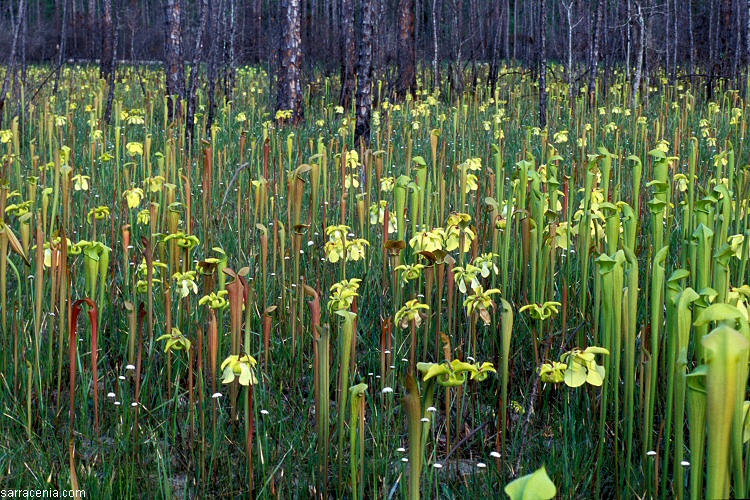
Oh man:
If you claim to be a carnivorous plant enthusiast, and if this
this view doesn't make your face flush or your toes tingle, maybe you should switch to some
other interest like trout-fishing, or perhaps you should bring your Dungeons and Dragons gear out of storage.
(If it isn't already! Hah! Hah hah!)
The best way to view this image is to plaster a high resolution version over your entire screen, instead of this
little 750×500 jpg. If I ever put some full-screen images on line as screen savers, this
would be one of them.
OK, actually, the best
way to view this image is to go to the damn place yourself, but that should go without saying! The good news is
that I think this place will be with us for at least a few years still.
A few, less breathless comments are deserved. My photographs from this site document something interesting.
The mostly-green plants occur in dense clumps (as in the right part of this image), while the redder plants grow more
widely spaced. In his writings on Sarracenia flava, Don Schnell noted that the different varieties
of that species has different clumping characteristics (because of the frequency of rhizome ramification).
You could argue, though, that the different pitcher
colors and spacing might be due to local soil, water, or light variations.
I notice that, in spite of all the pitcher production, there appears to be fewer flowers here than in the other sites.
Perhaps the flower buds were scorched by the burn? While in the field, we did not look for aborted flowers--darn.
It's fun to look at the flowers in these photographs--some are really pale white, while others are creamy or yellow.
I'm quite fond of the bone-white flowers.
Here are a few more views of the field:
View 1,
View 2.